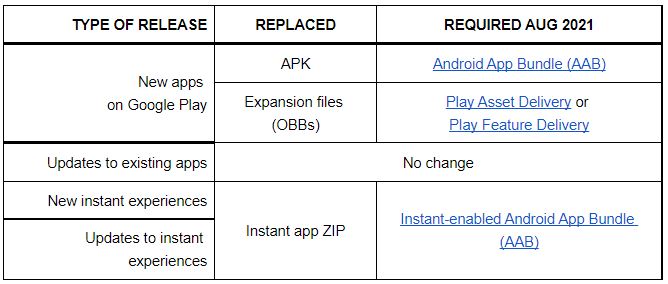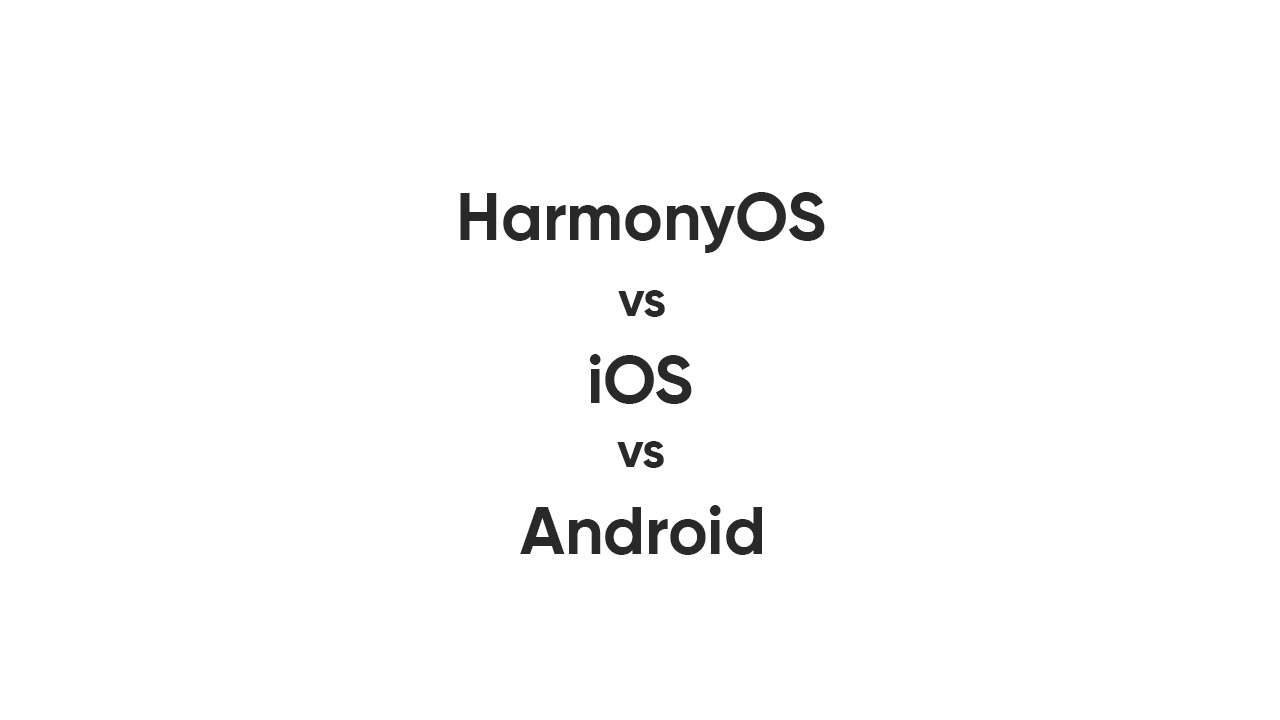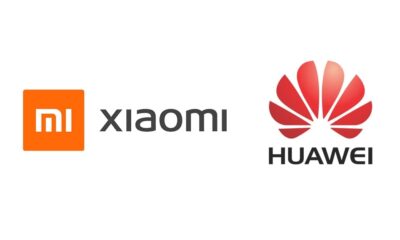Android
Android AAB apps, a direct attack on Huawei HarmonyOS?
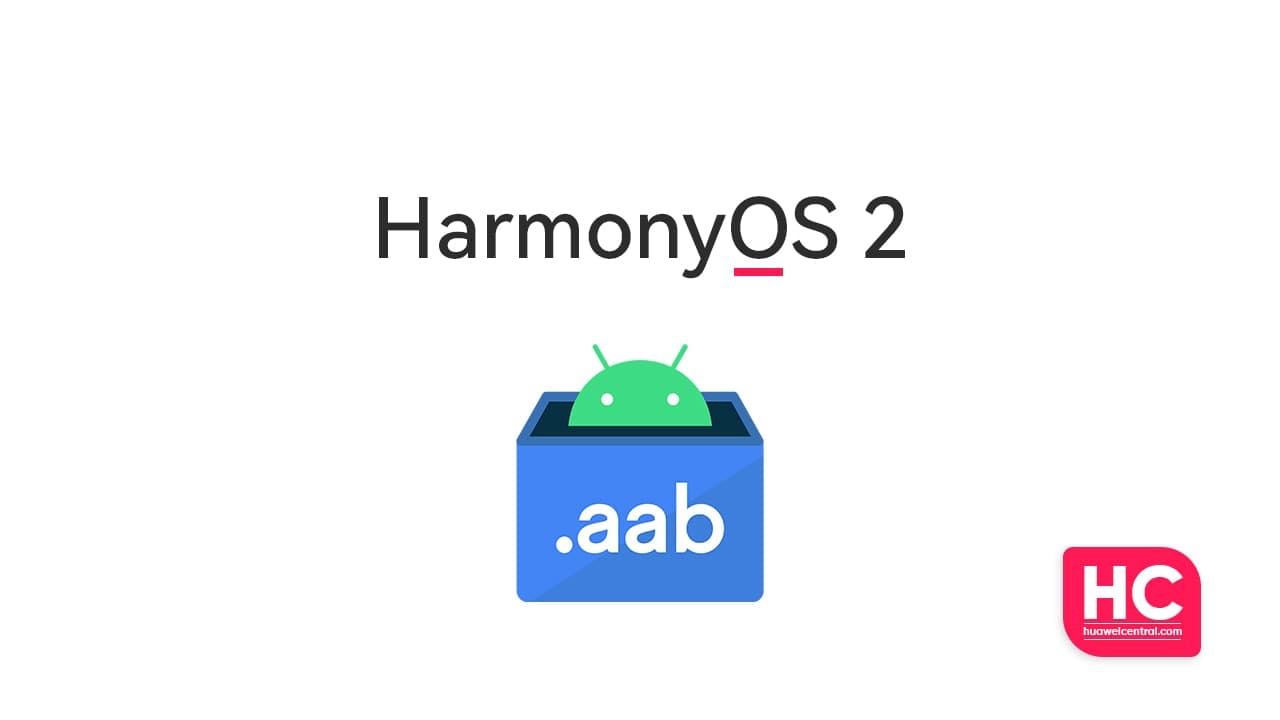
Currently, Huawei is busy in the process to shift its devices over the latest HarmonyOS 2 mobile operating system, which was unveiled on the 2nd of June 2021. However, there is still a long way remains for the company to cover.
The story of HarmonyOS comes into existence after the US put a ban on Huawei and Google left with no choice to withdraw its service support from the Huawei device. As Huawei has to fight for its survival, so the company brings an Android rival named HarmonyOS (Hongmeng OS or HM OS).
After numerous challenges, Huawei finally successfully started to launch HarmonyOS 2 in the devices and applications. The process is going smoothly and Huawei is again becoming stable but Google now surprisingly introduced the AAB or Android App Bundles, which seems to another threat for Huawei.
At this moment there are a lot of perspectives that need to be explained in order for a clearer understanding of how AAB can be a threat to HarmonyOS 2. Let’s get start.
What is AAB?
AAB is the acronym for Android App Bundles – a new app publishing format introduced by Google in 2018. This new format provides us features like reduced app size, high installation rate, easy switching, customizable features, Play Feature Delivery (PFD), and Play Asset Delivery (PAD), etc.
Now the question is if this format brings this many benefits how it can be a threat to Huawei?
Well, Google made this mandatory for the upcoming apps on Google Play Store by August 2021. It means every developer who wants to submit his app on the Play Store, must compile the app in the AAB format, otherwise, that app won’t be published on the Play Store.
At present, all the application uses APK (Android Application Format) format, which has support for different platforms. Unlike APK, the AAB doesn’t provide support for platforms such as Huawei AppGallery, and Amazon App Store.
It directly indicates that if a developer wants to submit his App on other channels after publishing on Play Store, the developer must have to reconvert the application in APK. As the other platforms still accept this format and not the AAB.
The same goes for the HarmonyOS kernel code, which supports only the APK format and possibly will next have to include AAB app support branches in the development.
Why Google Suddenly changed the program format of AAB?
Although Huawei smartphones don’t support the GMS (Google Mobile Service) but able to install some Android apps on HM OS. This is the most relieving fact for the users who takes fancy of Android applications even after upgrading to a whole new operating system.
If Huawei’s mobile software succeeds in building a brand new realm of the software world, it’ll be direct harm to Android. As we all know that success is a slow process and can’t be achieved in few trials. Neither we nor Google can overlook this attempt of Huawei.
At present, HarmonyOS isn’t as famous as Android but the distributive capabilities of the software have been acknowledged by the worldwide developer and they started to approach the company to adopt the HM OS.
Although Huawei HarmonyOS still depends on APKs, it certainly will setup up and take some time for Huawei to break free of dependence and stand alone on its own.
However, Huawei is in early-stage in overcoming the back-to-back stricks such as US-Sanction, Google apps withdrawal, and chip shortage, so it’s necessary for the company to run on the right track even if the speed is slow.
Even after these existing difficulties, the new AAB introduction could create another challenge for Huawei. If the AAB became the default format, the applications on Huawei AppGellary may gradually become fewer in numbers. As it’ll require extra effort to republish an app on another channel with APK format for developers.
But we want to mention that AAB is not a new project from the Android maker because it has been under development pipeline for years.
Android vs iOS vs HarmonyOS: Market dominance
With the popularity of Android, it’s still the priority of the developer to promote their works such as custom skin like MIUI, ColorOS, and other apps. Exploring the software market, we found that Android is the current most dominant software, and second, comes Apple’s iOS.
Where the iOS is the close system software, is exclusive to Apple device and ruling the market on the second position. On the other hand, Android is the king of the software market and ruling the 3 billion Android devices across the world with its open-source capabilities.
Many smartphone manufacturers modified the Android as the base skin and used in their phone, this same trend was followed by Huawei with EMUI but later Huawei stopped developing new EMUI versions on Android.
The arrival of HarmonyOS brings many new features, the different platforms and models start to adapt. This new system OS is moving towards a new empire, as in just a week about 15 million devices are already installed HM OS. Furthermore, the CEO of Huawei Consumer BG also set a huge target for the next year.
If Huawei successfully acquired the 15% shares of the software market, which is the company’s one of most important goals of the company, it can challenge Android and iOS for an even bigger market.
As of this year, Huawei expected to complete the installation of HarmonyOS 2 in 300 million devices, which will bring a big change in the entire software industry.
Conclusion:
If HarmonyOS secures its place in the software market, it’ll defiantly emerge as a new rising star and somehow Android doesn’t want to let that happen.
Momentarily, we have to wait for Huawei’s response to this situation, it’s worthwhile to see what solution will the company come up with. Because, as soon the AAB will become the default Android app format, it could bring potential difficulties for HarmonyOS.
Android
First Android 14 Developer Beta announced, launch around HarmonyOS 4

Android 14 is the next software version for the Android ecosystem. On February 8, Google stepped ahead to begin the development of this major upgrade with the first developer beta.
Google has released the roadmap for the development, beta testing, platform stability, and the final release of Android 14, which reveals meet the launch of Huawei HarmonyOS 4 later in the second half of 2023.
The first developer preview is already out for the Pixel devices. However, Google could open early access to other smartphone makers such as OnePlus by April when the open beta campaign kicks off.
As mentioned by the Android company, Android 14 is projected to reach platform stability by the end of July. But there’s still a possibility of these milestone timelines to delay, similar to last year.

For your information, the Android 14 developer preview will be a very useful and early gift to the developer community. It will pave a way for the app devs to know more about the upcoming APIs and app features ahead of the final launch.
Looking into the developer preview features, Android 14 promises to improve productivity, enhances performance, improvements to security, and privacy, and bring new customizations.
Yes, there are new tweaks and changes made over Android 12, while there are more that will be visible as the development progress further. Throughout this phase, these developers (and later users) will help to fix bugs and make improvements to the Android 14 source code.
HarmonyOS 4:
Aside from the Android 14 developer beta, Huawei is preparing for the HarmonyOS 3.1 rollout but the company is working on HarmonyOS 4 as a major release for the next generation of Huawei devices. For now, there’s no official launch date available but we are likely to hear more on this at the Huawei Developer Conference (HDC) 2023 event.
HarmonyOS 4 promises big upgrades over HarmonyOS 3 and a major restructure in the user interface (UI). Nonetheless, we’ll keep you posted.

(source – Android)
Android
Despite being an Android babyface, Samsung failed to understand dynamic theme in 2022
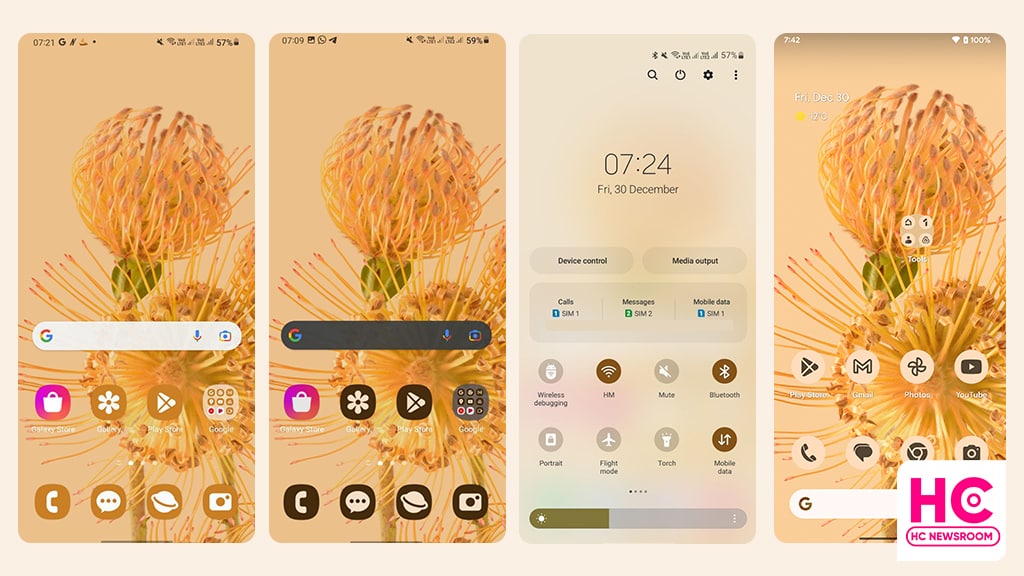
2022 is the year of Android 13 and Android phone makers spotted sending this software update with improved dynamic theme options, but as a babyface, it seems like Samsung still has not learned the core concepts of the dynamic theme.
Introduced with Android 12, the Material You powered dyanamic theme brings brand new settings to tweak the user interface. Instead of being just a feature, the dynamic theme became a part of Android’s soul. With Android 13, Google further polished the dynamic theme so it could be adapted to all Android devices.
Dynamic Theme (Simple version): Once you apply a new wallpaper, the phone generates a range of colors based on that wallpaper. The set of colors is called a color palette and it is then applied throughout the user interface.
Following the decline of Huawei, Samsung is enjoying unlimited Android prowess. It’s projected as a major Android promoter and a babyface. And why not? After all, the South Korean phone maker keeps on posting new mobile shipment records.
However, the handling of the dynamic theme in One UI 5 (which is based on Android 13) shows that Samsung wasn’t serious about being an Android babyface in 2022.
You may want to know, how I reached this conclusion and why Samsung is a failure when it comes to precise work. Let’s find out together.
Appearance:
The user interface is all about appearance, and so does the dynamic theme. Using the dynamic theme on Samsung One UI 5 is different from stock Android 13.
Note: I’ve used the same pixel wallpaper on both Samsung and Pixel devices. So, we can keep the comparison on the same level.
Home Screen:
Below is the home screen, which looks as usual on both One UI 5 and stock Android 13.
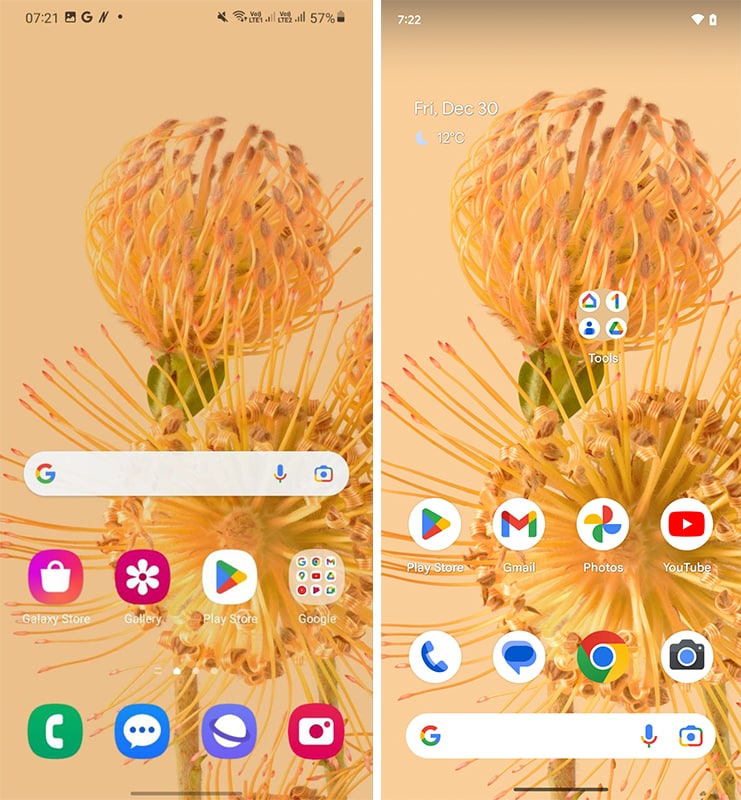
Quick Settings:
Both of the quick settings are using Material You in elements, such as quick access icons and sliders. However, the background on stock Android 13 is solid and remains black. On the other hand, Samsung uses a translucent background in the quick settings, which has not changed even with the Android 13. It is Samsung’s way of implementing features. While in some scenarios, this way obstructs the viewing experience.
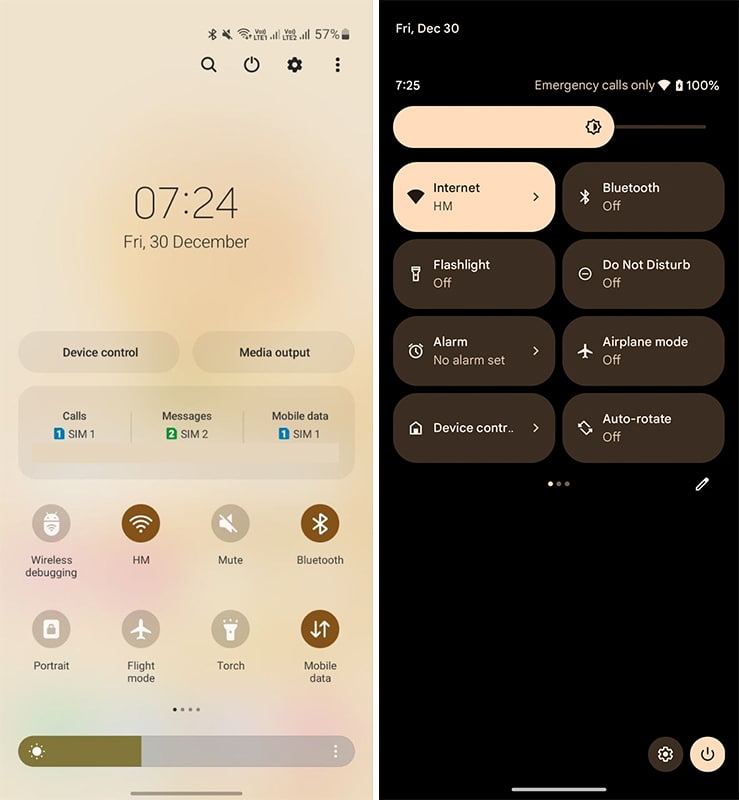
For example, the translucent background is now reflecting the colors of the app opened in the background. It also compromises the look and feel of the quick settings icons and the whole quick settings UI. But it becomes subtle when used on top of the Settings menu.
Below you can check the example of the quick settings opened over the following screens.
(Left – on top of home screen wallpaper, on top of Play Store, on top of Settings menu).
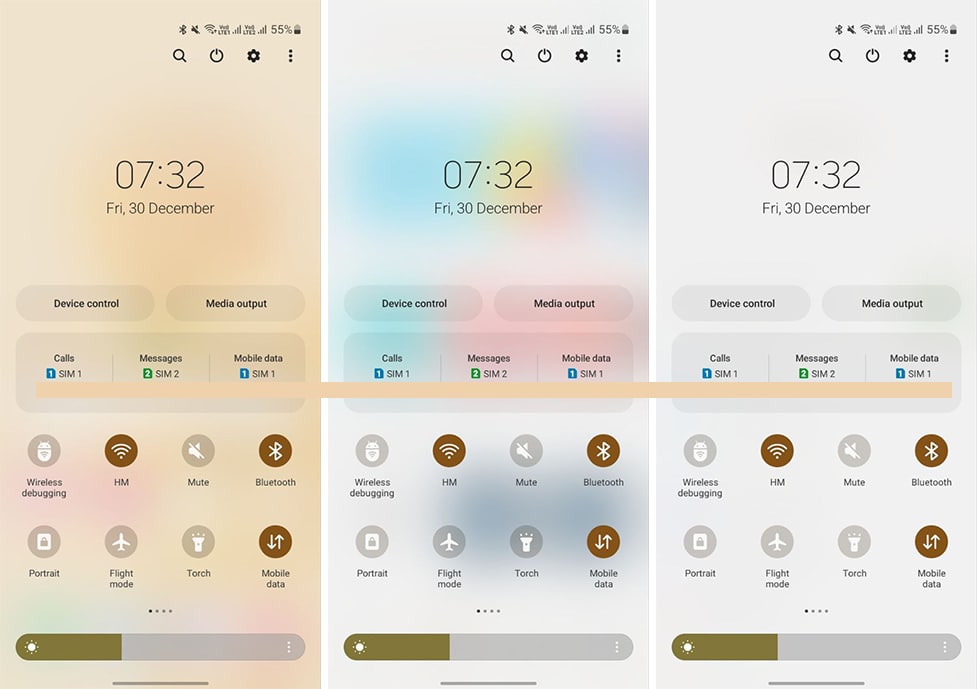
Settings:
The setting is an important part of UI, which we access at least once a day. The layout, font, and elements are different in these two softwares. But Samsung used a slight proportion of the color palette in the Settings’ background and remain neutral for applying to the rest of the user interface.
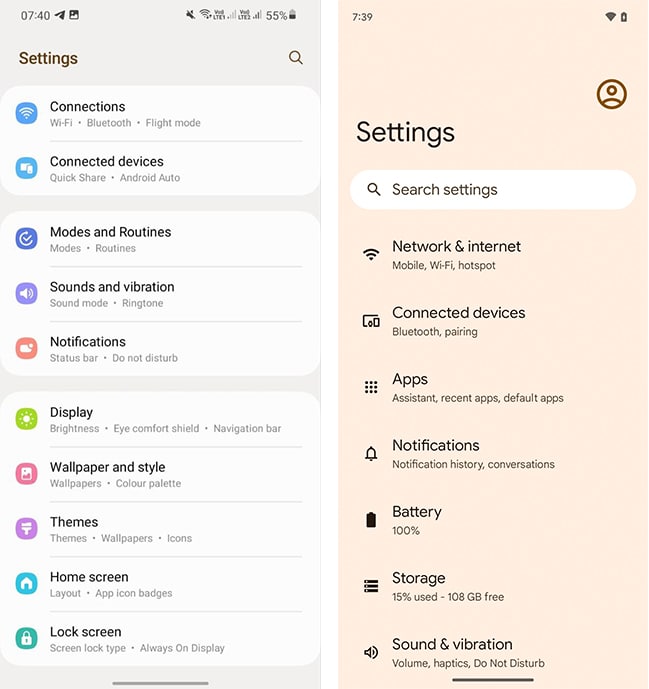
Themed Icons:
I love themed icons because it brings a new look to the app icons. However, Samsung’s way of doing things is a little more disappointing than what it actually looks.
Below you can check Samsung One UI icons painted with color pallets alongside stock android icons. The use and management of contrast in the background and tint on the shape (size too) are super lazy on One UI app icons.
On the flip side, stock Android gets these things done in the best way possible.
![]()
There’s further inspection on this available, apply Dark Mode and see the change.
![]()
Verdict:
We don’t need to explain the results. But It is certainly not nice to implement the dynamic theme for the Android babyface Samsung in 2022.
What could’ve happened?
If possible, Samsung should’ve to blend more into the material rather than bleed into the material. Improve icons, and check visibility levels of the UI elements and the current issues may resolve to an extent.
Android
MagicOS 7/Android 13 beta rolling out for Honor phones
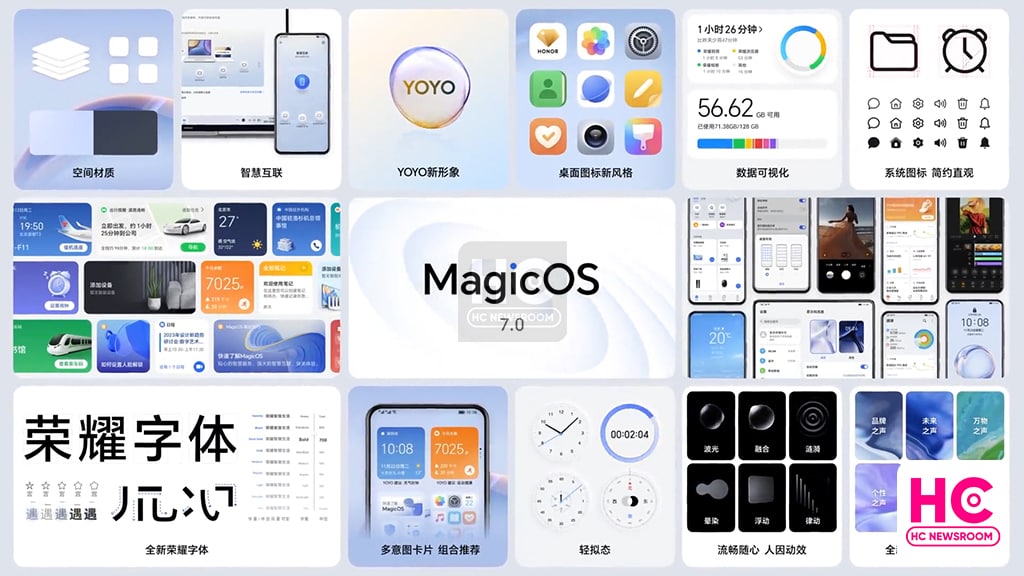
Last month, Honor announced Android 13 based MagicOS 7 and its beta is now rolling out for several models. The rollout is confirmed on various models mentioned in the official roadmap.
According to the information, Honor MagicOS 7 is released for closed beta testers and selected participants will move to public beta in the next phase. After completing the beta test, Honor will send stable MagicOS 7.
Let’s look into the models and their corresponding Honor MagicOS 7/Android 13 beta versions:
Honor Magic V:
The phone is receiving MagicOS 7.0.0.101 upgrading from Magic UI 6.0.0.185.
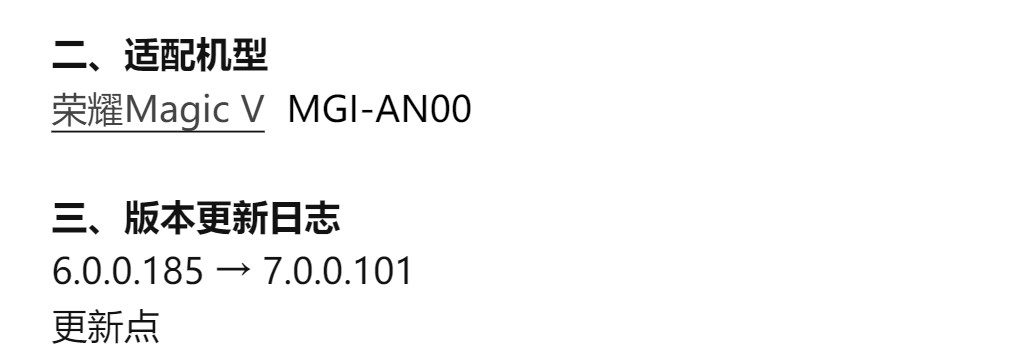
Honor Magic 3 Series:
Honor Magic 3, Magic 3 Pro, and Magic 3 Supreme Edition are receiving MagicOS 7.0.0.107 upgrading from Magic UI 6.0.0.139.
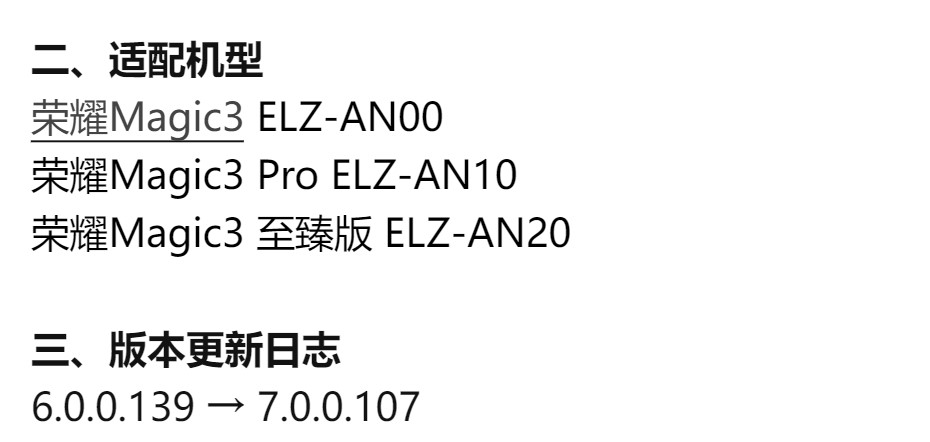
Honor Magic 4 Series:
Honor Magic 4, Magic 4 Pro, and Magic 4 Supreme Edition getting MagicOS 7 version 7.0.0.108 version upgrading from Magic UI 6.0.0.178.
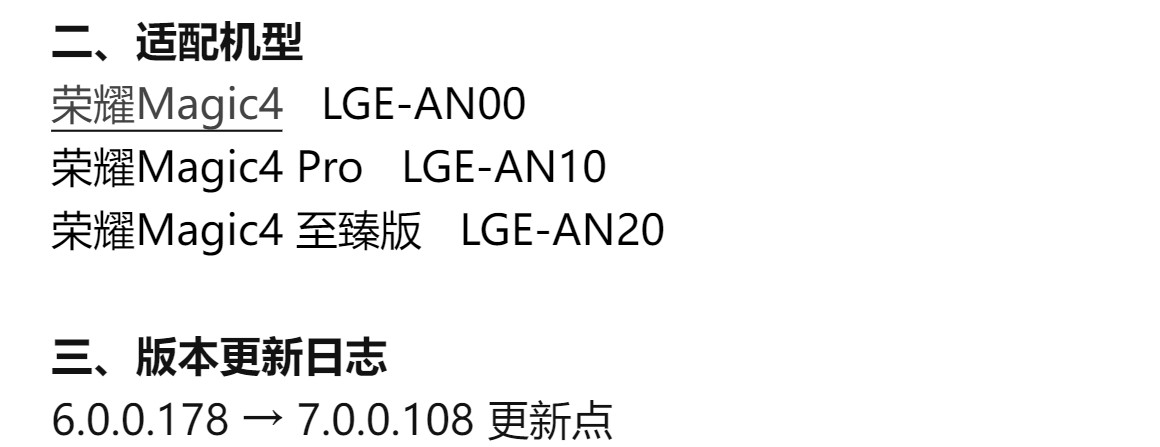
Honor V40:
Honor V40 series is also eligible to download MagicOS 7 closed beta with version 7.0.0.121 users will have to download Magic UI 4.0.0.201 and 205 to participate in the beta activity.
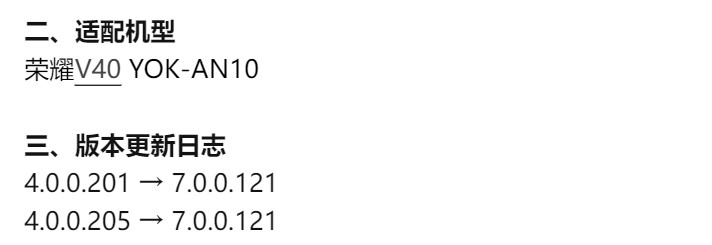
MagicOS 7:
Honor MagicOS 7.0 is a people-centered intelligent interconnection ecosystem, it continues to improve AI Services. The software is also released with a personalized OS, protects privacy and security proactively, and updated the accessibility operation.
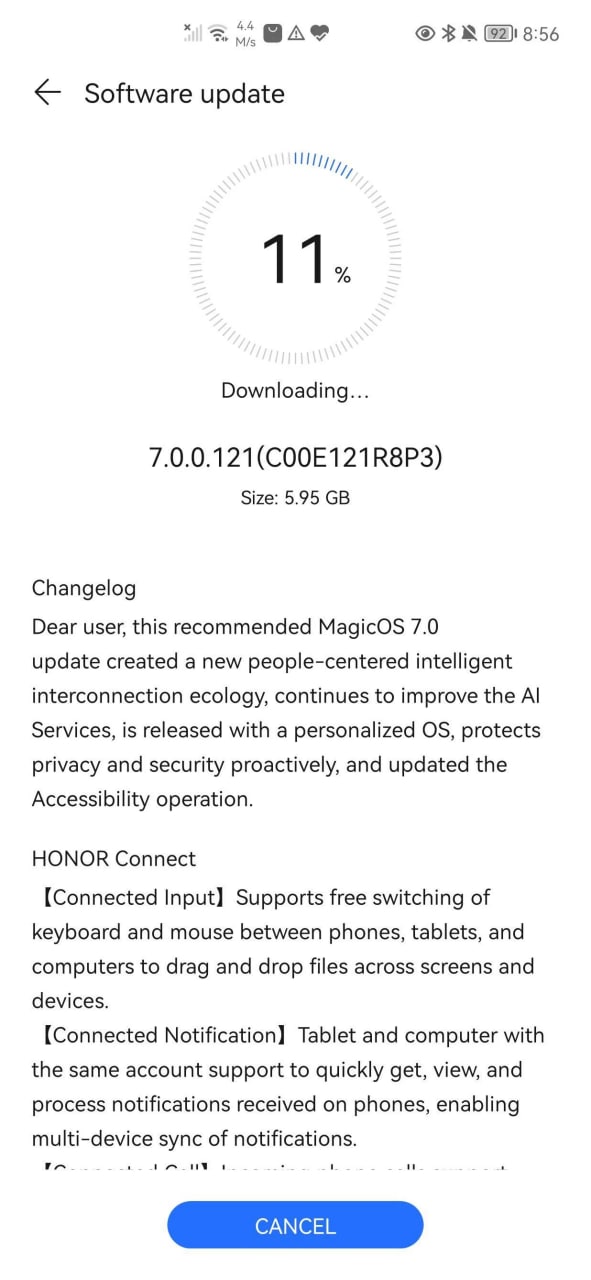
Beta:
It’s noted that the active rollout is spreading as Log and Nolog software packages.
Global:
Currently, Honor is conducting these beta activities in China and it may soon open for global users of these devices.
Notes:
- All of the eligible Honor smartphone owners must have to download the required firmware version before upgrading to MagicOS 7 closed beta.
- During the closed beta testing, users are recommended to join the software user experience improvement program. You can report or suggest features to support closed beta testing environments.
- This software update won’t erase your data but it’s recommended for you to make a backup of important files.
- Users are suggested to update system apps to meet the compatibility.

